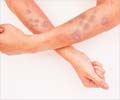Specific resistance mutations for two classes of p7 inhibitor, which may explain their lack of effectiveness in clinical trials combined with current standard of care have been identified

More than 3% of the world population is infected with HCV, which causes severe liver disease. HCV is the leading cause of liver-related mortality and most common cause for liver transplantation in the U.S. Studies have shown that the current treatment of PEGylated interferon alpha (IFN) and ribavirin (Rib) does not adequately achieve a sustained virological response in many HCV patients. This, coupled with the high cost and poor patient compliance, continues to drive demand for new virus-specific therapies.
"The HCV p7 ion channel plays a critical role in infectious virus production, representing an important new therapeutic target," said lead researcher Dr. Stephen Griffin with the Institute of Molecular Medicine at the University of Leeds in the UK. Previously, Dr. Griffin and colleagues determined that p7 acts as a proton channel within HCV infected cells, and that its function could be blocked by small molecule inhibitors, resulting in a blockade of infectious virus production.
In the present study, the team set out to expand on their prior work by predicting inhibitor binding sites using molecular modeling, which were then validated by the identification of resistance mutations. This allowed the researchers to define the mode of action for two prototype p7 inhibitor classes—adamantanes (amantadine and rimantadine) and alkylated imino-sugars (IS). This confirmed not only specific, but distinct effects for these inhibitors on the p7 protein. As these drugs are known to be safe in humans, they could rapidly be combined with new direct-acting HCV drugs, while paving the way for the development of novel, more potent compounds.
Dr. Griffin explains, "Our study confirms that single amino acid changes can mediate resistance to p7 inhibitor drugs." The study describes that low fitness cost for the observed mutations suggest that a minimal genetic barrier to their selection exists, which explains the perceived lack of p7 inhibitor efficacy in clinical trials combined with IFN/Rib. "Further investigation into the molecular basis of p7 drug resistance will aid in the design of novel, more effective therapies to combat HCV," concluded Dr. Griffin.
Source-Eurekalert














